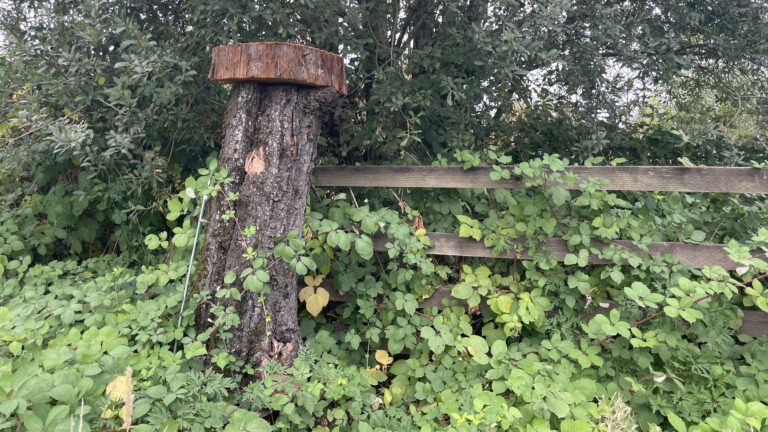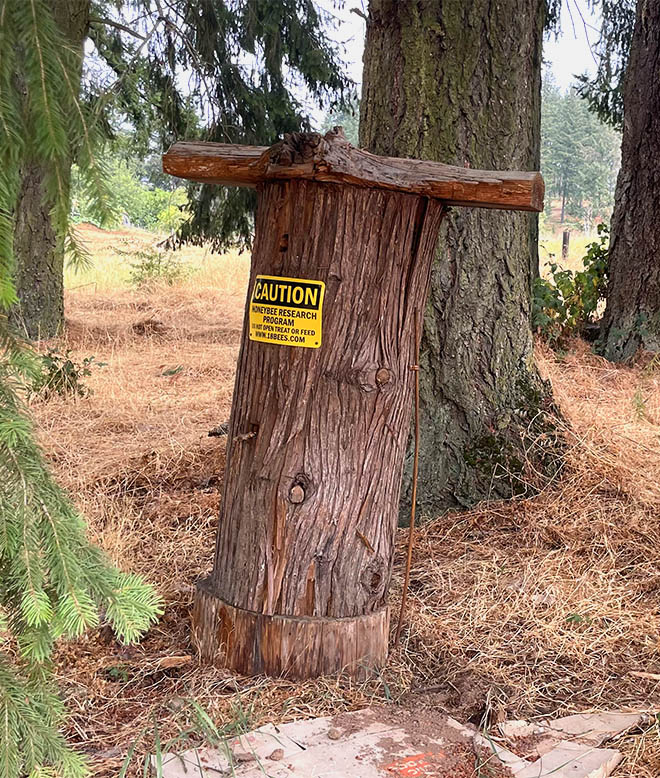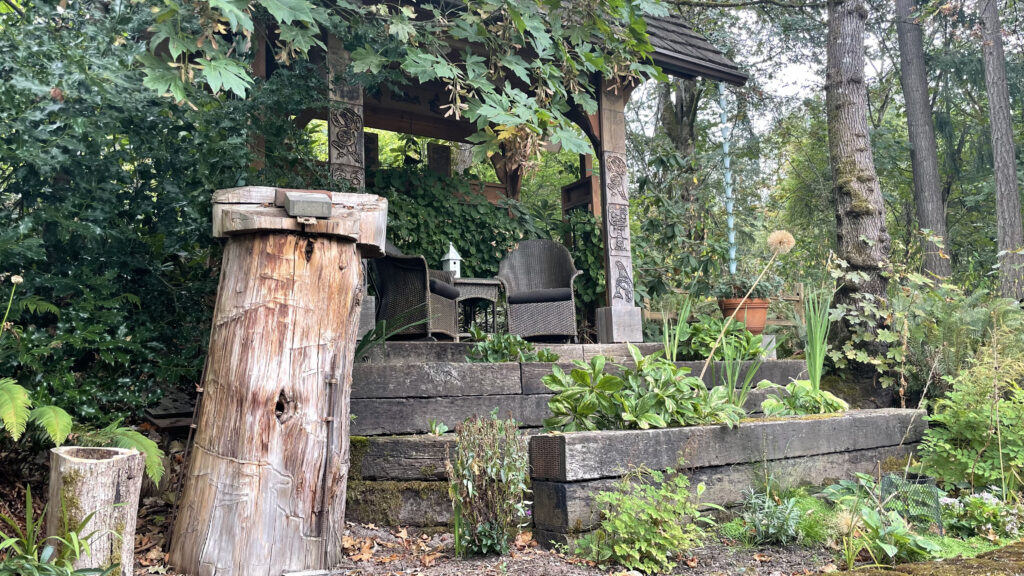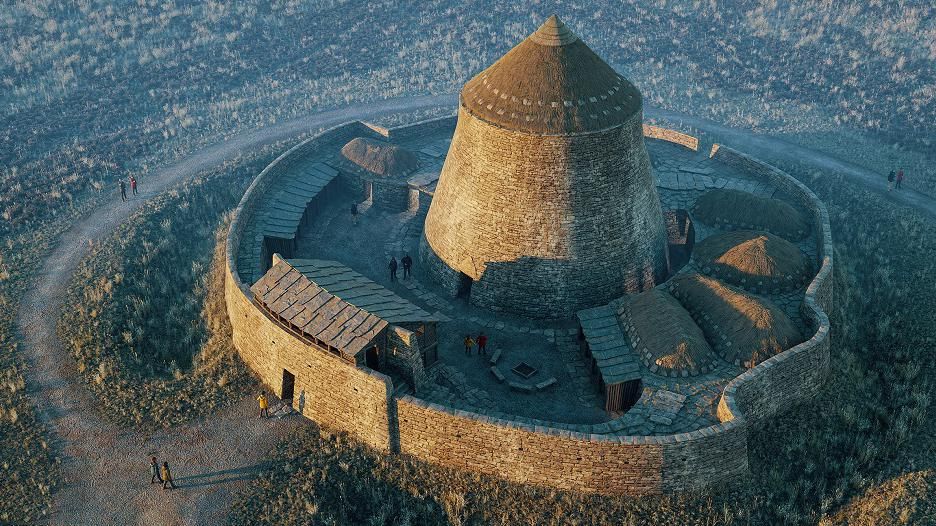

Years ago I used to keep bees in traditional Langstroth Square Boxes. I spent thousands of dollars on nucs filled with bees, hive equipment, treatments and feeding, education, mentorship program and association dues. I followed best practices to the letter of the law and still the bees rarely made it into the following Spring. I wasn’t alone and it didn’t make sense.
While hiking and working in the woods I often come across feral / wild honeybee nests in tree cavities with clear evidence of the bees having had their home in these cavities for years. The massive build up of propolis at the entrance was the sign, and every winter I’d go back to visit these nests on a warm day to see some coming and goings of the bees.
From there on I stopped buying bees and starting putting swarms into hollowed out logs, leaving them alone, never opening the hive, never feeding or treating them and viola they started getting through the winters and emerging the following Spring.
That’s when it dawned on me that the bees only need our help to create habitat for them to swarm to and to feed on. You see, all the hollow trees, their natural habitat, are being destroyed.
If you’re ever out in the woods and you come across an upright hollowed out log with a lid on it then you’ve stumbled across Swarm Habitat.

Insulated and breathable, tree cavities are the ancient homes of honeybees. It’s not a huge leap to figure out that scout bees from a swarm are going to love stumbling across hollowed out logs.

Although this is in it design phase Broch Hives will be the next big thing to hit the Pacific Northwest.
Swarm Habitat is not just about honeybees and native pollinators. It’s about understanding the quality and origin of the food we eat.